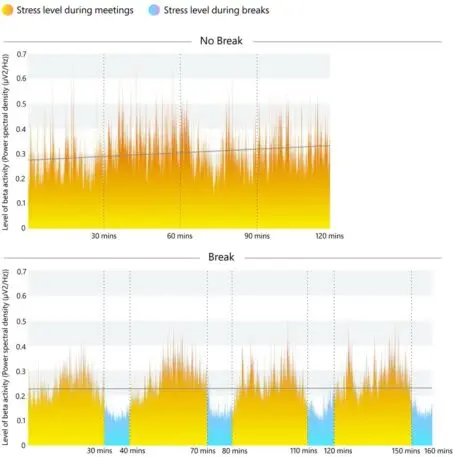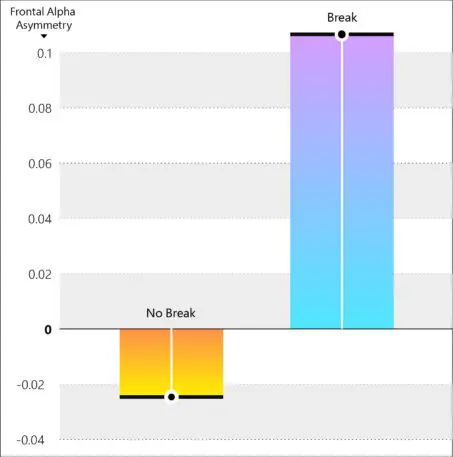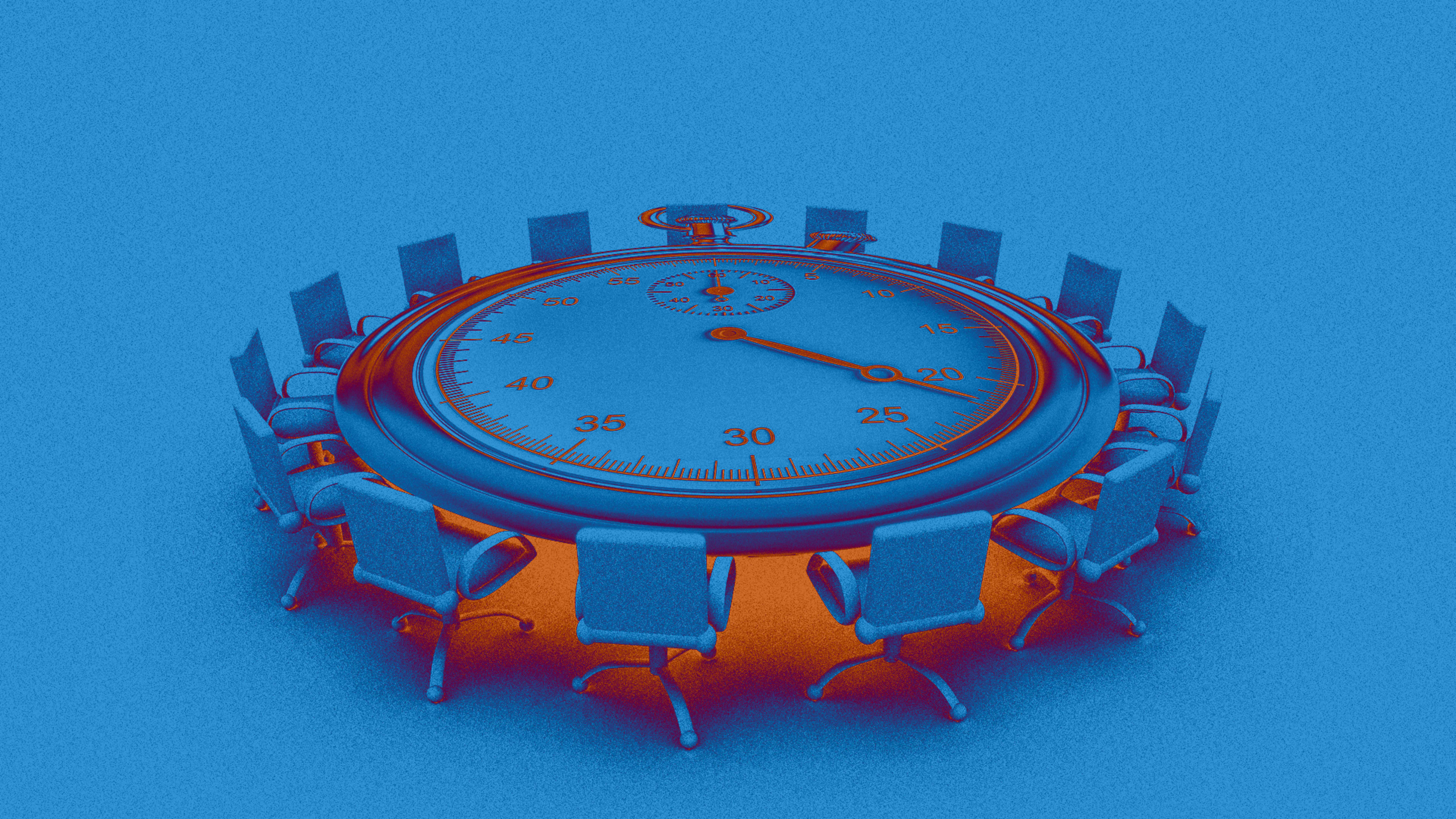Recently, Microsoft’s Human Factors Lab conducted an experiment. It involved 14 test subjects sitting through Microsoft Teams meetings concerning typical business tasks such as writing a marketing plan and planning office space. And the whole affair was intended to simulate real-world situations except for one thing: The attendees wore electroencephalogram (EEG) caps that allowed Microsoft to monitor electrical activity in their brains.
On one day, the subjects participated in four back-to-back half-hour video meetings. That made for two nonstop hours of collaboration. On another day, participants also did four half-hour video calls. But this time, rather than ending one session and immediately diving into another, they paused for ten minutes and meditated using the Headspace app.
During those meditation breaks, EEG readings showed the test subjects’ stress levels tumbling, as you’d expect. But though their stress then increased during the subsequent meetings, it still fell well short of the stress levels recorded when the same people attended consecutive meetings with no breaks.

By “break,” Bohan does not mean “spending ten minutes frantically trying to catch up on email.” Microsoft had everyone meditate using Headspace for the sake of consistency in its testing methodology. (The company also announced a partnership last year that integrated Headspace into Microsoft Teams.) But Microsoft 365 corporate VP Jared Spataro says that any pleasant activity that isn’t about getting stuff done should do the trick: “It’s less about meditation and it’s more about disengaging your brain from the work. In our own research, we’ve seen that sketching, doodling, and reading can have very similar effects.”
Now, this isn’t an instance of research data that’s going to lead anyone to reassess what they thought they knew about a topic. Of course being trapped in endless meetings is bad for your ability to bring your full intellect and energy to your work. Microsoft just confirmed what anyone who’s ever done three meetings in a row—as I did this morning—could have told you.
Even though too many meetings with too few breaks isn’t a new problem, the company says that the era of virtual meetings compounds it. “Our brains are wired for talking with human beings in the real 3D world and not in flattened grids—digitized people that you only see part of,” explains Bohan. “You feel compelled to stare at people, but in the real world, you don’t do that.” A single typical video meeting is more stressful than its in-person equivalent; three or four in a row may be downright excruciating.

And now Microsoft is tweaking the calendar features in Outlook to permit customers to specify defaults that carve out break time, with both the meeting and break default lengths user configurable. For instance, what might have been a 30-minute meeting starting at 2 p.m. could become a “shortened” 20-minute meeting ending at 2:20 p.m., with ten minutes for a brain-clearing break. (Alternatively, the ten minute break could start at 2 p.m., pushing the meeting to 2:10 p.m.)
Besides letting individuals shorten their own meetings this way, Outlook will let organizations set default meeting and break lengths, thereby encouraging everyone to err on the side of briefer meetings that don’t collide with each other. A pop-up message will explain that such policies have been instituted at the organization level.
All along, of course, it’s been possible to keep meetings brief and preserve plenty of downtime—it’s just that such discipline doesn’t come naturally to many of us. Microsoft hopes that the new options will help. “You could have already done this before, just adjusting the meeting time,” says Spataro. “But because it’s so easy to click on your calendar and take the default within that block, we see so many 30 minute, 60 minute meetings, and people fill the time.”
In part, back-to-back meeting culture is a result of calendar apps defaulting to hour-long meetings.
Microsoft isn’t the only calendar company who thinks about it this way. For almost a decade, Google Calendar has had a Speedy meetings option which describes itself as ending “30 minute meetings 5 minutes early and longer meetings ten minutes early.” But a 60-minute meeting that ends ten minutes early isn’t a speedy 60-minute meeting; it’s a 50-minute meeting. It should be embraced on its own merits!

That’s not even accounting for the many meetings that just keep on going well after their official scheduled time has elapsed. It’s all too easy to envision people treating Outlook’s 50-minute meetings and ten-minute breaks like . . . well, a one-hour meeting.
In part, back-to-back meeting culture is a result of calendar apps defaulting to hour-long meetings, which they’ve done for as long as I can remember. That dramatically increases the chances that you’ll end up with two (or more) meetings in a row and no breathing space in between. It seems to me that simply allowing an organization to set the default meeting length at 50, 45 minutes, or less would go a long way toward addressing this problem, without introducing the wrinkle of “shortening” meetings or making them “speedy.”
Still, I appreciate what Microsoft is trying to do with these new features. If more people err on the side of keeping meetings short and remembering to recharge their mental batteries, it can only be progress. For years, Outlook has facilitated meeting overload; it’s about time it did something to discourage it.
Recognize your brand’s excellence by applying to this year’s Brands That Matter Awards before the early-rate deadline, May 3.
